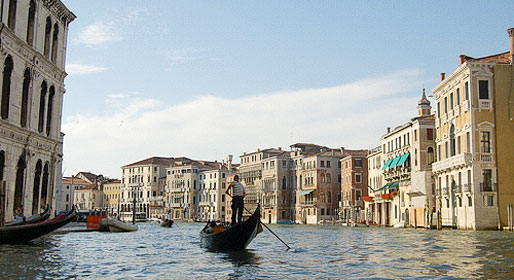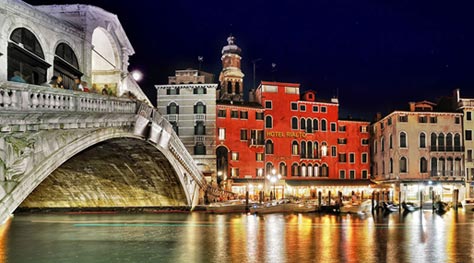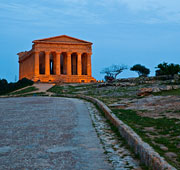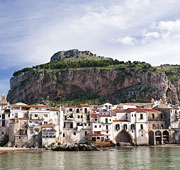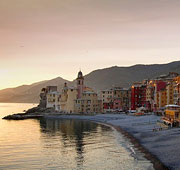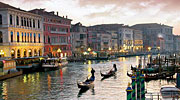Venice's lagoon pearls
Churches, palaces, museums, art galleries: the treasures of the city of the doges and the islands of the lagoon
A visit to Venice inevitably starts in Piazza San Marco and the district of the same name. A veritable open air drawing room lined with elegant 18th century cafés, visitors are always struck by the immense beauty of piazza's Basilica, its bell tower, and the Palazzo Ducale.
Piazza San Marco - heart of Venice
The foundation of the Basilica of San Marco dates back to 828, year in which the relics of the evangelist were brought to Venice from Alexandria in Egypt. The form of the Basilica is Byzantine, built on a Greek cross plan. Entering the church, we are greeted by a magnificent display of glimmering mosaics.
The bell tower is not attached to the Basilica but rather stands alone, in a corner of the piazza from where it looks towards the sea. The Palazzo Ducale, residence of the Doge and Venice's major political institutions, is, arguably, one of the finest examples of Venetian Gothic architecture.
Venice is not just Piazza San Marco, but rather a whole circuit of picturesque canals and fascinating, monument-filled districts
The district of Castello is named after the fortress built on the island of San Pietro so as to protect the city. Among the streets of Castello we find the Dominican Basilica dedicated to the Saints John and Paul, erected at a strategic distance from the Frari Basilica of the rival Franciscan order.
We continue our exploration of Venice in the Cannareggio district, an ancient commercial district and home to the city's Jewish Ghetto.
Opera and contemporary art: the Fenice and the Peggy Guggenheim Museum
We access the fascinating districts of Santa Croce and San Polo by traversing one of the symbols of Venice: the Rialto bridge.
Just beyond the bridge lies the splendid Church of San Zandegolà, built between the 11th and 12th centuries.
We make our next stop in the district of Dorsoduro, which boasts two important permanent art exhibitions, in the Peggy Guggenheim Gallery of Modern Art and in the Accademia Gallery, the latter housing a stunning collection of Venetian paintings from the 14th to 19th century.
In the immediate vicinity we find Palazzo Dario, built in 1487 by Pietro Lombardo and known as much for the misfortunes to have befallen on its various proprietors as for its unusual asymmetrical form.
Before coming full circle and arriving once more in Piazza San Marco, we take time to visit the Fenice theatre, completely rebuilt according to the designs of the original 18th century playhouse which was destroyed by fire in 1996.
Venice Casino and Film Festival
No visit to Venice is complete without having first explored the islands of the lagoon. Crossing over the canal of Giudecca we come to the islands of Sacca Fisole and Giudecca. This is where the Church of the Redeemer is located, built as a votive temple to bring the devastating plague of 1575-76 to an end.
On the nearby island of San Giorgio Maggiore, we come across the Basilica of the same name, where the relics of Saint Stephan were brought in 1109.
The island of Lido is known not for its churches but rather for its luxurious hotels, its Casino, and for the Venice Film Festival, hosted here each year
The ancient arts of lace-making and glass-blowing
Murano and Burano are famous on a world wide scale; the first for its glasswork and the second for its lace making tradition. Whilst in Murano, we take time so as to admire the Church of Saints Maria and Donato. Burano's 16th century Church of San Martino also merits a visit.
The island of Torcello is famous for its splendid Basilica of Santa Maria Assunta, whilst the small island of San Michele attracts visitors wishing to pay homage to the great artists, such as Igor Starvinskij and Ezra Pound, buried in its monumental cemetery.
Itineraries
Main destinations
Hotels in the area
- Useful links
- Veneto
- Venice Hotels
- Veneto (all hotels)

